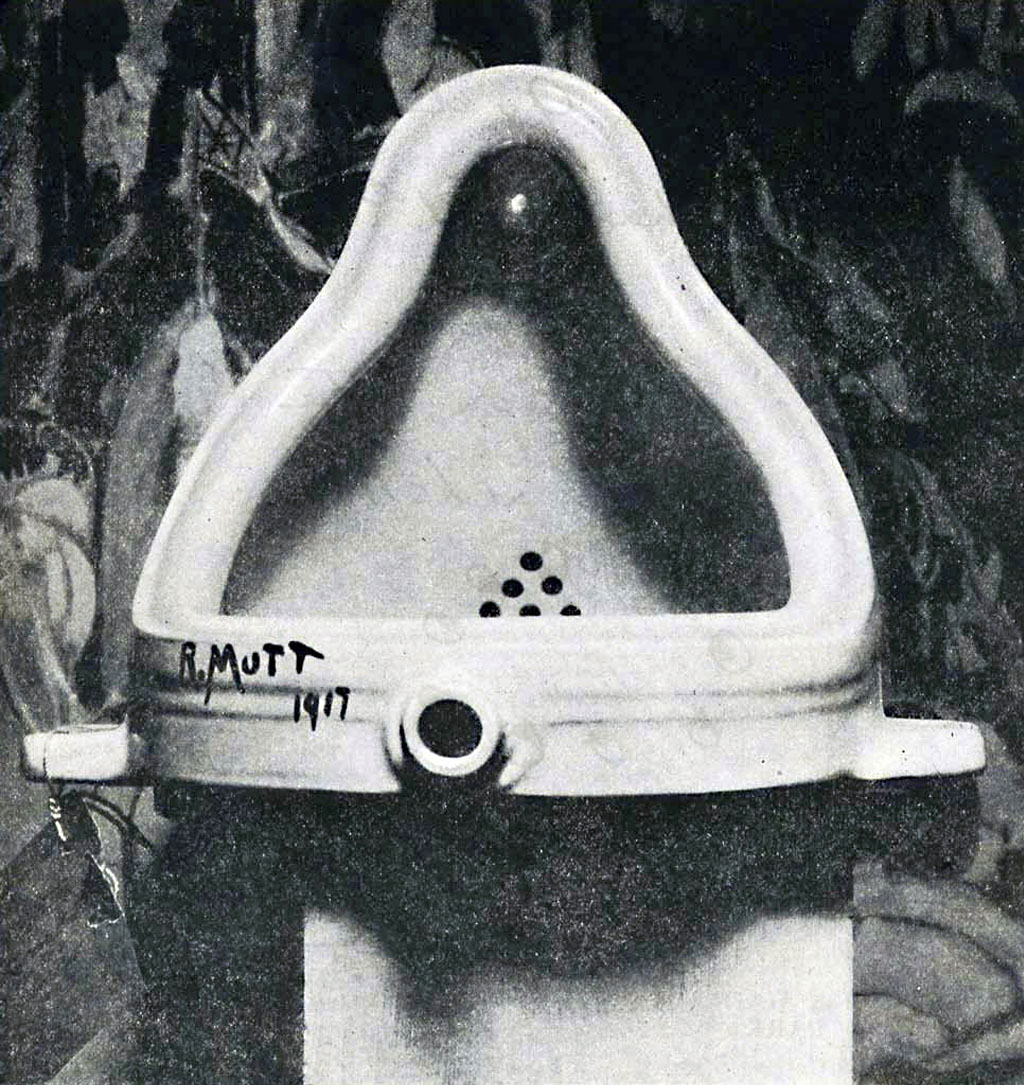01-05-17 // SMALL URBANISM

Marcel Duchamp’s Fountain photographed by Alfred Stieglitz at the Art Gallery 291
after the 1917 Society of Independent Artists exhibit.
Small Urbanism
By Bernd Upmeyer
Big is beautiful. Jarrik Ouburg made that quite obvious some years ago in his contribution to our MONU #6 issue on “Beautiful Urbanism”, in which he described the city of Tokyo with its urbanity, its scale and density, as an inexhaustible source of beauty. Size seems to matter. We have all known that ever since Rem Koolhaas claimed that “beyond a certain scale, architecture acquires the properties of Bigness”, in his legendary manifesto “Bigness, or the problem of Large” from the early 1990s.
However, since the biggest innovations and changes in our society increasingly seem to occur on the small and micro level, we recently became fascinated by the other end of the spectrum: Smallness. When Koolhaas stated that the best reason to embrace Bigness is the one given by climbers of Mount Everest – “because it is there” – we believe that the best reason to concentrate on Smallness is “because it is almost not there”. Because often, the things in our cities that matter the most and have the largest effects on our urban environment, are the small and almost unrecognizable elements that nevertheless have the ability to create a certain ‘urban butterfly’ effect. A tiny element such as a measuring point in the city of Berlin can still have a tremendous impact on a city, for example, as Jeremy Beaudry revealed in his article “A Typology of Mess Punkt” also published in MONU #6. He imagined those little spikes holding the city tied to the earth, in a makeshift attempt to fix Berlin to the world, in case it might fly away because of a sudden loss of gravitational pull.
That sounds wild, of course, but it opens a discussion on small urban elements, and particularly small physical urban elements, and their importance for and effects on cities, something we wish to call “Small Urbanism”. To some extent we already started a discussion on small urban elements and units, and their relevance for cities, with one of our most recent issues, #24, on “Domestic Urbanism”, in which we demonstrated that a small urban unit, such as an apartment, can have a remarkable effect on a city, and that – in turn – a city can have incredible influence on those small urban units and the way we live. Nevertheless, housing is not meant to be the main focus of this issue. Instead, we seek to detect and locate those small urban elements that are most important to our cities and their functioning in a spatial, social, but also political, economical, ecological, and philosophical sense, and describe and analyze these elements and their urban significance. Moreover, we are interested in the question concerning the limits of “Small Urbanism”: how small can these small urban elements factually be before they become irrelevant for cities and thus no longer fall within the notion of urbanism?
Furthermore, in this new issue of MONU we aim to investigate how small urban elements relate to other urban elements – whether big or small – creating micro-urban conditions, and how – in general – things in cities work on the small scale. Additionally, we are intrigued to find out how much power not only small physical urban elements, but also small-scale urban interventions and actions can have on the larger urban realm, building innovatively and progressively upon knowledge that has been developed recently on the topic and through dialogues between designers and urban communities, introducing small-scale but socially catalytic interventions into the fabric of cities.
Title: Small Urbanism
Author: Bernd Upmeyer
Date: May 2017
Type: Call For Submissions for MONU
Publications: MONU – Magazine on Urbanism
Publisher: Board Publishers
Location: Rotterdam, The Netherlands